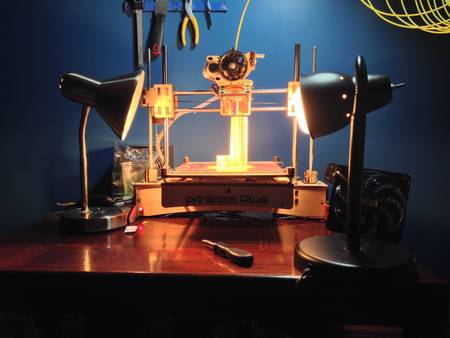Most 3D printer owners quickly discover the perils of printing ABS plastic in a cold or even room temperature environment. The quirky material shrinks a small amount when it cools after emerging from the hot extruder. This often leads to warping, as the lower portions of the print shrink and the newer portions are still hot. If the warping is significant, the print may detach from the bed causing you fits and anger. What to do?
There are several solutions, each with varying cost and difficulty.
The first and most common solution is the heated bed. This is an electrically heated surface that can be tuned to the specific plastic being extruded to ensure it both sticks fast and does not warp. Some personal 3D printers come equipped with heated beds, while others can be upgraded to have one. While this approach is usually successful, in reality only the lower portions of the print are heated.
Another solution is the “heated chamber”. It’s accomplished by simply sealing up the entire print volume and hoping the capture any heat inside. This can be effective simply due to heat from the extruders, which of course are inside the enclosed volume. You can add a heater – which sometimes can be a heated bed – for additional effectiveness.
There are other solutions, such as aiming a heat gun at the build platform, or even setting up heat lamps to bathe your print in glorious warmth, as done in the amazing image above by reddit user andersonmatt1125.


